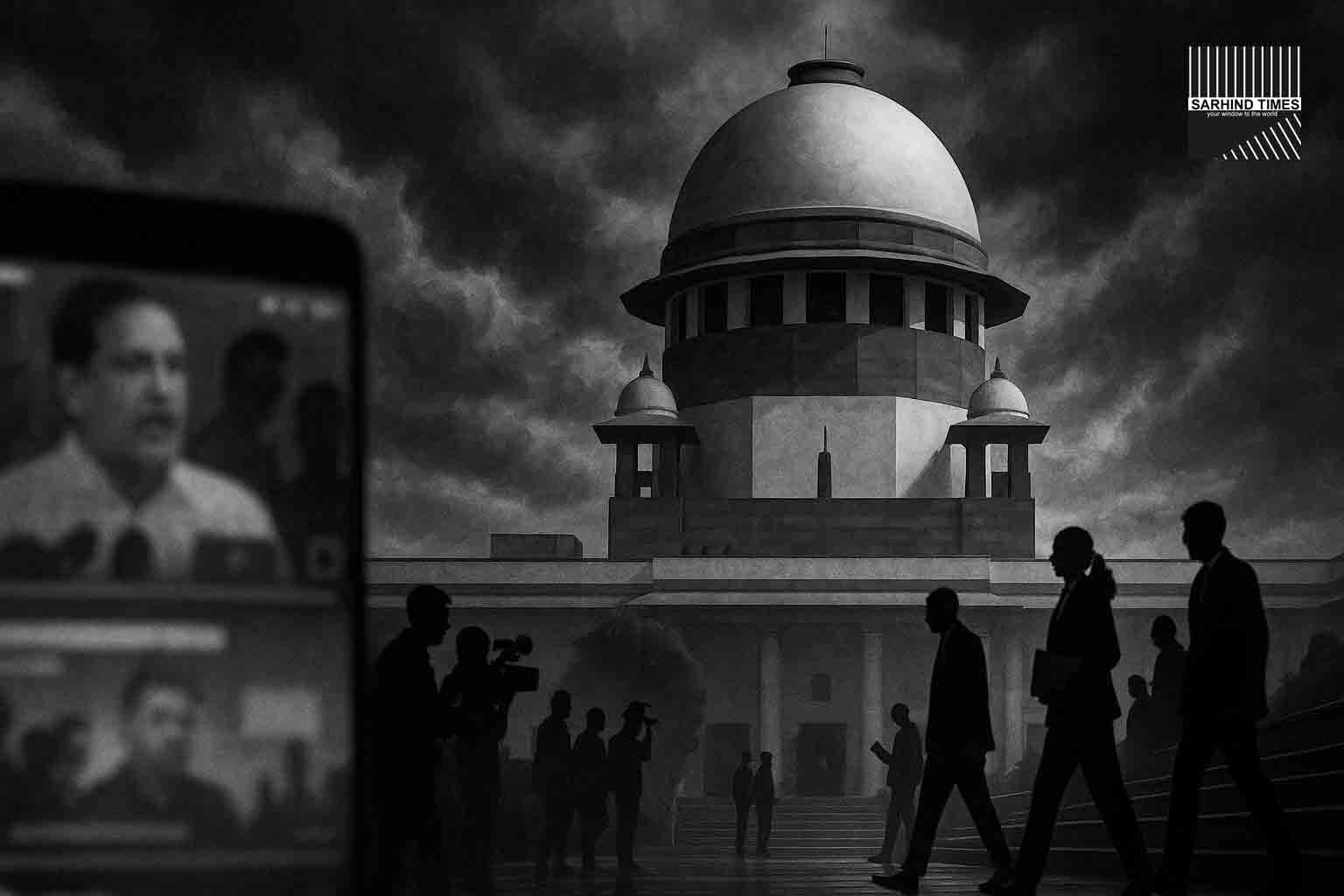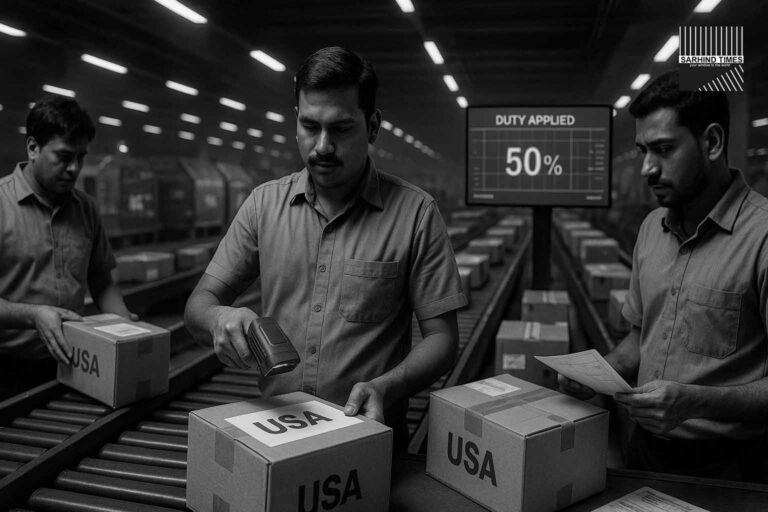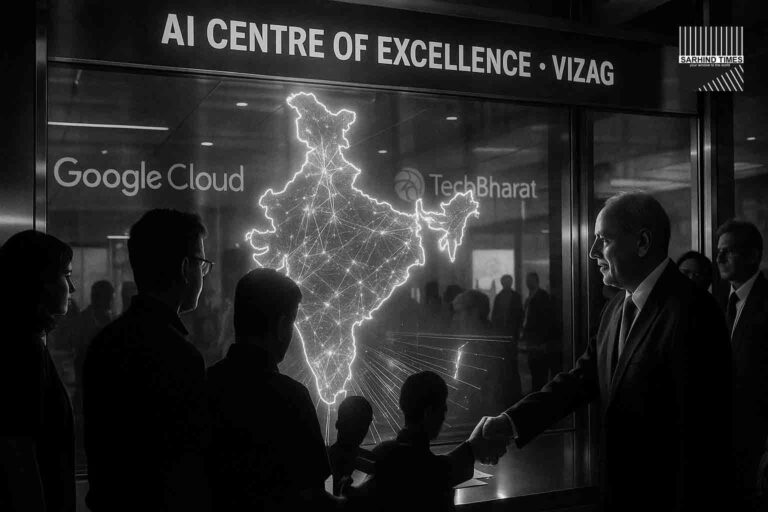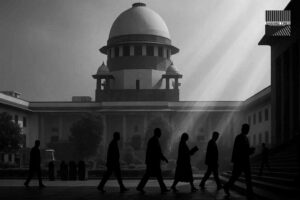By SarhindTimes Legal & Political Desk | New Delhi
Date: October 8, 2025
In a development that could redefine the contours of free speech and political accountability in India’s digital age, the Supreme Court on Tuesday agreed to hear a petition seeking registration of an FIR against the Assam unit of the Bharatiya Janata Party (BJP) over a campaign video allegedly vilifying the Muslim community.
The apex court issued notice to the state government and the BJP unit, listing the case for detailed hearing later this month. The petitioners allege that the video, circulated widely on social media platforms, “targets, demonises and stigmatizes” Muslims, violating earlier court directives on hate speech.
1. The Case That Reignites a National Debate
At the heart of the controversy lies a short animated video released by the Assam BJP’s official social-media handle during a recent local campaign. The clip, which portrays Muslims through derogatory imagery, has triggered outrage among civil-society groups and minority organizations.
A coalition of petitioners—including human-rights lawyers, digital-rights activists, and academics—approached the Supreme Court after local police allegedly failed to register a First Information Report (FIR) despite complaints filed in Guwahati.
The plea seeks the Court’s intervention to ensure that hate-speech laws are enforced uniformly, even when the alleged offender is a ruling political party or its affiliate. It also requests guidelines to curb dissemination of such material during election campaigns.
2. Supreme Court’s Initial Observations
A Bench led by Chief Justice D.Y. Chandrachud, along with Justices J.B. Pardiwala and Manoj Misra, issued notice to the Assam government and the BJP, calling for responses within three weeks.
The Chief Justice reportedly remarked that “the question before us is not about political rivalry but about the constitutional limits of expression when it borders on vilification.” The Court emphasized that previous directions mandating prompt action against hate speech “apply to all actors equally, irrespective of political affiliation.”
3. What the Petition Argues
The petitioners contend that the Assam BJP’s video violates Sections 153A, 295A, and 505(2) of the Indian Penal Code, which penalize promotion of enmity, deliberate insult to religion, and circulation of inflammatory material.
They further cite the Supreme Court’s past rulings in:
- Pravasi Bhalai Sangathan v. Union of India (2014), where the Court urged proactive action against hate speech;
- Asha Ranjan v. State of Bihar (2017), affirming that freedom of speech cannot override the right to dignity;
- Kailash Vijayvargiya v. Union of India (2023), where the Court stressed swift FIR registration in hate-speech complaints.
The petition also highlights the Election Commission’s (ECI) recent advisory warning parties against using AI-generated or deepfake content that may “mislead or malign communities.”
4. BJP’s Likely Defence: Political Expression & Context
Although formal submissions are pending, BJP sources have indicated that the video forms part of “satirical campaign material” protected under Article 19(1)(a) of the Constitution.
The expected argument is that political speech—especially during elections—enjoys enhanced constitutional protection, and that context and intent must be considered before criminalizing communication.
Senior counsel close to the party noted that the video did not name any religion explicitly and represented “social commentary on vote-bank politics.” The defence is also likely to cite global precedents emphasizing freedom of political expression, such as New York Times v. Sullivan (U.S.) and Handyside v. United Kingdom (ECHR).
5. The Legal Threshold for Hate Speech
Determining what constitutes hate speech remains one of India’s most complex constitutional challenges. The Supreme Court has repeatedly urged restraint in criminalizing speech unless it “incites imminent violence or discrimination.”
Under existing jurisprudence:
- Article 19(1)(a) guarantees freedom of speech;
- Article 19(2) allows “reasonable restrictions” for public order, decency, morality, or relations between communities.
Yet, courts have found it difficult to maintain consistency. What one bench deems political satire, another may classify as communal provocation.
Legal scholar Faizan Mustafa explains:
“The core test is intent and effect. If a video’s dominant purpose is to vilify a group rather than debate policy, it crosses into hate speech.”
6. The Digital Dimension: When Campaigning Meets Algorithms
Unlike traditional rallies, digital campaigns now reach millions instantly, often amplified by algorithms. The Assam BJP video trended on several platforms within hours of release, before being taken down following backlash.
Experts note that digital virality magnifies harm: content once online can resurface repeatedly during election cycles.
“Political deepfakes and AI-generated clips are the new frontier of hate propagation,” said Anjana Menon, a digital-ethics consultant. “Legal systems still treat them like pamphlets, but their reach is exponentially greater.”
This case, therefore, may force the Supreme Court to clarify how hate-speech jurisprudence applies in digital ecosystems governed by private algorithms.
7. Election Commission’s Role and Parallel Monitoring
The Election Commission of India (ECI) has separately launched a Digital Content Verification Cell to monitor online campaigns for hate speech, misinformation, and synthetic media.
While the Commission can issue notices or remove content, only the police and courts can pursue criminal liability. The overlap of jurisdictions—between ECI advisories, IT Rules, and IPC provisions—has often resulted in delayed accountability.
The petitioners have urged the Court to establish joint protocols requiring Election Commissions and state police to coordinate on hate-speech complaints during election periods.
8. Free Speech vs Accountability: The Constitutional Balance
The Supreme Court’s intervention rekindles the age-old tension between freedom of expression and protection from harm.
India’s constitutional scheme does not guarantee absolute free speech; rather, it recognizes speech with responsibility. In practice, enforcement has oscillated: artists and activists have faced quick FIRs, while political figures have often received leniency.
A senior advocate remarked, “The question is not whether free speech exists—it is whether it applies equally to the powerful and the powerless.”
9. Past Precedents: Lessons from Prior Cases
The judiciary’s record on hate speech reflects both progress and caution.
- Tehseen Poonawalla v. Union of India (2018): Directed states to register FIRs within 24 hours for hate crimes and mob violence.
- Amish Devgan v. Union of India (2020): Upheld FIRs against a TV anchor accused of derogatory remarks, underscoring “responsible journalism.”
- Mahesh Bhatt v. Union of India (2022): Declined prior censorship of political satire, warning against chilling effect on creativity.
This evolving jurisprudence suggests the Supreme Court will weigh intent, audience impact, timing (election period), and platform reach before deciding whether criminal proceedings are warranted.
10. Political Reactions Across the Spectrum
The controversy has reignited debates within political circles:
- Opposition leaders accused the BJP of “weaponizing communal stereotypes.”
- BJP spokespersons dismissed the petition as “politically motivated litigation timed to coincide with the poll season.”
- Civil-society groups called for bipartisan consensus to curb communal propaganda.
Assam Chief Minister Himanta Biswa Sarma said his government “respects judicial process” but added that political messaging “should not be criminalized selectively.”
11. Implications for Digital Platforms
The case also places social-media companies under renewed scrutiny. If the Court deems the video as hate speech, platforms could be asked to proactively remove similar content and tighten algorithmic filters.
Under the Information Technology (Intermediary Guidelines and Digital Media Ethics Code) Rules, 2021, intermediaries must act on government or court orders to remove unlawful material.
However, free-speech advocates warn against over-censorship. “The solution is not mass takedowns, but transparent procedures and due process,” said Nikhil Pahwa, founder of MediaNama.
12. Expert View: A Defining Test for Digital Accountability
Constitutional lawyer Gautam Bhatia described the case as “a defining test for how the judiciary adapts free-speech doctrines to the realities of digital virality.”
“If every viral post becomes criminal speech, democracy will suffocate. But if we ignore targeted vilification, minorities will live in fear. The Court must strike a razor-thin balance.”
The decision could lay the groundwork for a “Digital Hate Speech Code”, establishing criteria for when online political content crosses into criminal territory.
13. What Happens Next
The matter will return to the Supreme Court’s docket later this month. The Bench is expected to:
- Examine transcripts and translations of the disputed video.
- Seek responses from Assam Police on complaint handling.
- Consider guidelines proposed by the Law Commission of India (Report No. 267) recommending specific hate-speech offences.
- Potentially appoint an amicus curiae to map international standards.
A final ruling may take months, but even interim observations could shape enforcement during the upcoming assembly elections in Assam and beyond.
14. Broader Significance: Hate Speech and India’s Democracy
The case touches the moral core of India’s democracy—how to balance robust debate with respect for diversity.
India’s constitutional promise of fraternity depends on speech that informs, not inflames. As social-media narratives replace street rallies, words now travel faster than laws can catch them.
The forthcoming judgment could therefore influence not just legal doctrine but also political culture—sending a signal about whether accountability stops at the screen name or reaches the power behind the upload.
15. Editorial Insight: Equal Justice in the Age of Hashtags
Courts have long been custodians of both liberty and restraint. Today, they must navigate a realm where AI tools generate propaganda, and where outrage can be engineered overnight.
This hearing represents more than a legal skirmish; it is a referendum on India’s information ethics. Whether the Supreme Court expands the definition of hate speech or insists on higher thresholds, its verdict will shape how politics and technology coexist in the world’s largest democracy.
As one senior advocate remarked, “The next frontier of constitutional law isn’t the street—it’s the screen.”
#SupremeCourt #HateSpeech #Elections #FreeSpeech #Assam #DigitalContent #Judiciary #MediaLaw #AIPropaganda #Democracy
























+ There are no comments
Add yours